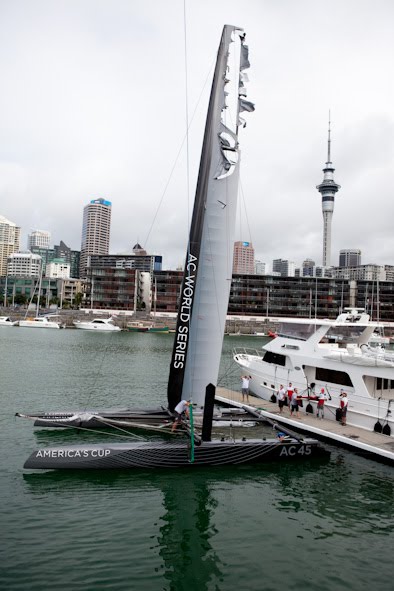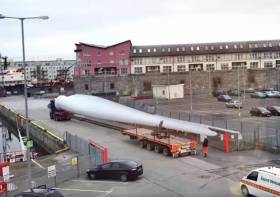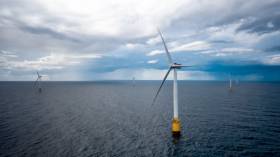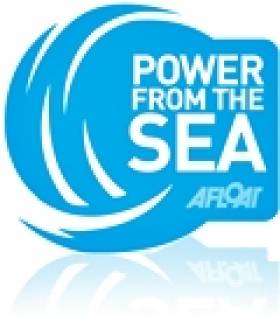Displaying items by tag: windfarm
A windfarm can offset carbon emissions generated across its 30-year lifespan in under two years, a new study says.
The study published in the Journal of the Royal Society of New Zealand also demonstrates that within six months a turbine can generate all the energy consumed across its life-cycle.
The research draws on data from the Harapaki onshore wind farm in Hawke’s Bay, New Zealand, but the authors say their findings “would be replicated across most, if not all, wind farms internationally”.
The study reviewed current literature on wind farms, as well as using real construction data to take into account everything from the manufacturing of individual turbine parts, to transporting them into place, to decommissioning the entire 41-turbine wind farm at Harapaki.
The results indicate that this particular farm would leave a carbon footprint of 10.8 gCO2eq/kWh, which equates to a greenhouse gas payback time of 1.5–1.7 years for avoided combined cycle gas turbines, and an energy payback time of 0.4–0.5 years.
“The outcomes of our study underscore the environmental efficiency of onshore wind farms and their important role in the energy transition,” lead author Isabella Pimentel Pincelli from the Sustainable Energy Systems research group, Wellington Faculty of Engineering, at Te Herenga Waka Victoria University of Wellington, said.
“ Notably, the manufacturing of wind turbines is the primary contributor to the carbon and energy footprints, highlighting a critical area for targeted environmental mitigation strategies,”she said.
To address the carbon outlay of the process of developing such wind farms, the expert team recommend developing a recycling process for end-of-life blades.
Currently blades are disposed of in landfill due to commercial feasibility, but recycling the blades – either mechanically or chemically – could result in a drop in emissions from the current 10.8 gCO2eq to a potential 9.7.
The authors note the study has some methodological limitations, as it focuses only on the energy intensity and emissions throughout the life cycle of the wind farm, even though there are other environmental impacts. It also focuses on onshore structures.
These impacts would include ozone depletion, human toxicity, acidification, eutrophication, and resource depletion. Social, wildlife, or economic impacts were also not considered.
Blow to Britain's Offshore Renewable Energy Targets After Vattenfall Stops Work on Norfolk Project
Swedish energy giant Vattenfall’s decision to stop work on a multi-billion euro windfarm off the Norfolk coast has dealt a blow to Britain’s renewable energy targets.
As The Guardian reports, Vattenfall said it was no longer profitable to work on the Norfolk Boreas windfarm, designed to provide power to the equivalent of 1.5 million British homes.
Jess Ralston of Britain’s Energy and Climate Intelligence Unit think tank said the withdrawal was influenced by the British government’s decision to set the starting price for the next contract auction before a global rise in market prices.
International increases in gas prices have led to a 40 per cent increase in manufacturing costs, which has put “significant pressure on all new offshore wind projects, Vattenfall said.
“It simply doesn’t make sense to continue this project,” Vattenfall’s chief executive Anna Borg is quoted as saying.
“Higher inflation and capital costs are affecting the entire energy sector, but the geopolitical situation has made offshore wind and its supply chain particularly vulnerable.”
Vattenfall secured the contract to build the Norfolk Boreas project last year after bidding what is described as a “record low price” of £37.35 (43.46 euro) per megawatt hour for electricity generated.
Read The Guardian report here
North Galway Windfarm Project Proposed Geotechnical Survey Raises Concerns Among Inshore Fleet
Inshore fishermen working grounds in Galway Bay have expressed concern about the impact of geotechnical works for one of the Irish west coast’s first offshore wind farms.
The Sceirde Rocks fixed bottom offshore wind farm in north Galway Bay is a proposed 450 MW output project, which is one of seven “phase one” wind farms.
The seven projects – six in the Irish Sea and Sceirdre Rocks on the west coast - received marine area consents (MACs) from Minister for Environment and Climate Action Eamon Ryan in December 2022.
Projects which have been granted a MAC are permitted to apply for development permission and secure a route to market within set timeframes.
The seven phase one projects can also participate in the Irish government’s offshore renewable energy support scheme 1, as in the first auction for offshore wind under Ireland’s Renewable Electricity Support Scheme (RESS).
The Sceirde Rocks project, or Fuinneamh Sceirde Teoranta, was an Irish project which was acquired by the Green Investment Group (GIG) in September 2021.
It is now managed by Corio Generation, which was established as a specialist offshore wind business by GIG in April 2022.
The Sceirde wind farm is being developed as a joint venture with the Ontario Teachers’ Pension Plan, with a target completion date of 2030.
The project developers compensated local fishermen in the Carna, Ballyconneely and Roundstone areas for a geophysical survey last year, although one local fisherman sought a court order to ensure his fishing was not interfered with.
The project now wants to undertake geotechnical surveys, and Connemara fishermen are concerned about the impact of what they describe as more invasive work on fish stocks, in addition to disruption to fishing activity.
They say they have been told the geotechnical survey work would require 500m exclusion zones to accommodate jack-up drilling gear.
The area around the Sceirde Rocks in north Galway Bay is known as a prime lobster ground. Conservation of lobsters through v-notching has been actively supported.
Public consultation closed in late February for foreshore license applications lodged by the company in relation to site investigation activities for the wind farm array area.
The company says the aim of the site investigations is to determine geotechnical, geophysical, met ocean, wind resource and benthic characteristics.
The company is also seeking a foreshore license for investigations relating to the required offshore export cable route for the wind farm.
In its application it says that there are two potential offshore export cable corridors – one making a landfall in Galway Bay, and the second making a landfall further south along the coast near Milltown Malbay and Doonbeg in Co Clare.
It says following confirmation of the Sceirde Rocks offshore wind farm grid connection point, it intends to survey only one chosen export cable corridor.
"However, it is possible that each type of site investigation may be undertaken simultaneously (along both cable corridors)," it says.
The company says it has been consulting with local fishermen, and will continue to do so. The foreshore license applications are with the Department of Housing, which handles MACs.
Brown crabs are “mesmerised” by electromagnetism from underwater power cables laid around Scotland for offshore wind farms, a newly published study has found.
The edible crab Cancer pagurus displayed a clear attraction to the underwater cables, the study published in the Journal of Marine Science and Engineering has found.
Scientists at Edinburgh’s Heriot-Watt University focused on the behaviour of a group of about 60 crabs at St Abbs marine station on the Scottish borders.
They found the higher levels of electromagnetism emanating from the cables caused cellular changes affecting the crabs’ blood cells.
“Underwater cables emit an electromagnetic field. When it’s at a strength of 500 microteslas and above, which is about 5 per cent of the strength of a fridge door magnet, the crabs seem to be attracted to it and just sit still,” Alastair Lyndon of Heriot-Watt University said.
“If they’re not moving, they’re not foraging for food or seeking a mate. The change in activity levels also leads to changes in sugar metabolism,” he said.
“ They store more sugar and produce less lactate, just like humans.”
“The aquarium lab is composed entirely of non-metallic materials, which means there is minimal electromagnetic interference,” Kevin Scott of St Abbs marine station said.
“ We found that exposure to higher levels of electromagnetic field strength changed the number of blood cells in the crabs’ bodies. This could have a range of consequences, like making them more susceptible to bacterial infection.”
Brown crabs are Britain’s second most valuable crustacean, and the most valuable inshore, catch. The scientists say the findings show how fishing markets could be affected by the change in crab behaviour.
The researchers have called for further research to ensure extensive underwater cabling required for Scottish coast wind farms does not destabilise the brown crab population.
Lyndon pointed out that if male brown crabs stop migrating up the east coast of Scotland, due to the impact of cables, it could affect population levels in the north-east and off the islands – and, by extension, the livelihoods of inshore fishermen.
Burying cables could provide a solution, but it is regarded as costly and posing maintenance challenges.
“We need to investigate further technical solutions so that we don’t create negative environmental effects while trying to decarbonise our energy supply,”Lyndon said.
The full study in the Journal of Marine Science and Engineering can be read here.
#Windfarm - Giant wind turbine blades seen in Galway Harbour last winter are now in operation in Connemara as part of Ireland’s biggest ever windfarm project.
According to the Connacht Tribune, the Galway Wind Park between Galway Bay and Lough Corrib aims to generate enough energy from its 58 enormous wind turbines to power more than 140,000 homes annually — while offsetting over 220,000 tonnes of carbon emissions.
The news comes just days after the world’s first floating windfarm began generating power for Scotland, as previously reported on Afloat.ie.
World’s First Floating Windfarm Now Powering Scotland
#Windfarm - The world’s first floating windfarm is now generating power for Scotland, according to BBC News.
Afloat.ie previously covered the Hywind Scotland project, backed by Norwegian energy giant Statoil, which comprises a series of giant wind turbines tethered to the seabed off the coast of Aberdeenshire.
The 6MW, 175-metre-tall turbines in this pilot project are said to generate enough energy to power as many as 20,000 homes.
Scotland’s First Minister Nicola Sturgeon officially opened the windfarm this week, saying it “underlines the potential of Scotland's huge offshore wind resource and positions Scotland at the forefront of the global race to develop the next generation of offshore wind technologies.”
Recently a tidal power station in the far north of Scotland announced it had broken the world record for electricity generation, as The Independent reports.
The company behind the MeyGen project say they generated 700 megawatt hours of energy in the month of August from its more than 250 turbines installed on the sea bed in the Pentland Firth between Orkney and the Scottish mainland.
Floating Windfarm For Scottish Waters
#Windfarm - Scotland is set to host the first floating offshore windfarm in British and Irish waters, as the Guardian reports.
Backed by Norwegian energy giant Statoil, the Hywind Scotland project will comprise five 6MW turbines interconnected by cables and anchored to the seabed, generating energy to power as many as 20,000 homes.
Construction is set to begin off mainland Scotland's easternmost point at Peterhead in the new year, and is expected to see reduced generating costs well below £100MWh.
It's also hoped that the pioneering scheme will lead to the use of more remote and deeper water sites for the windfarms of the future.
The Guardian has more on the story HERE.
Plan to Power Edinburgh with Giant Windfarm
Plans are afoot to power Edinburgh with a giant offshore windfarm, the Edinburgh Evening News reports.
The £1.2 billion (€ 1.37 billion) project proposed by Irish group Mainstream Renewable Power could see as many as 130 turbines generate power for up to 335,000 homes.
The turbines would be installed 30km north of Dunbar, East Lothian, though a number would be visible from the coastline.
Concerns have been raised by East Lothian residents at a consultation hearing regarding the environmental impact of the project, dubbed Neart na Gaoithe (might of the wind), though wildlife and environmental surveys are still being carried out.
Any final go-ahead on the windfarm scheme would have to be given by the Scottish government.
As previously reported on Afloat.ie, Mainstream Renewable Power - headed by Eddie O'Connor - has signed deals for windfarms in South Africa and Alberta province in Canada.
The Evening News has more on the story HERE.
Marine Department Promised, First America's Cup Capsize, Whales and Sailing Oil Tankers
I am reflecting this week on a varied list of maritime issues which have arisen in my writings on marine topics.
Following recent pieces I wrote about the attitude of political parties in the General Election towards the marine sector, I had a telephone call from a senior Fine Gael politician and, lo and behold, the party included the marine sector in its manifesto, pledging to restore the Department of the Marine, abolished by Fianna Fail. I await post-election developments with interest.
It has been a good week for those interested in protection of whales and dolphins. Hundreds of dolphins were spotted off the Old Head of Kinsale, apparently following shoals of herring and sprat on which they were feeding.
In the Antarctic the Japanese whaling fleet was forced to give in to pressure to stop culling. The Japanese have killed hundreds of whales every year, claiming this was for "scientific purposes," even though it has been identified worldwide as for human consumption. The fleet was ordered home by its Government after increasing international pressure.
The Irish Whale and Dolphin Group published its annual report this week. It was formed in December 1990, dedicated to the "conservation and better understanding" of cetaceans - whales, dolphins and porpoise - in Irish waters through "study, education and interpretation." IWDG turnover in 2010 was around €300,000. It has dealt with up to 10,000 queries a month for information on its website. A total of 92 strandings of 128 individual cetaceans was reported to the IWDG in 2010. This compares to 137 strandings of 169 animals for 2009.
This week oil prices rose because of the unrest in Libya and David Surplus, Chairman of B9 Energy Britain's largest windfarm operator, warned that sooner or later oil will run out. BP is examining the possibility of building a fleet of carbon-neutral, wind-powered sail ships planned, to carry world trade.
On the international sailing scene the new AC 45, forerunner of the next generation of America's Cup boats was launched in New Zealand and had its first capsize. The wing-sailed catamaran is designed for speed and close racing, capable of making up to 30 knots, while intended to be handled in tight, tactical courses. An exciting boat to sail, it will also be very testing of ability. The first capsize of the new boat occurred on Auckland's Hauraki Gulf, hit by what was described as "a freak gust of wind," while the crew were doing maintenance on board before a sailing test.

Back in dock after the capsize
It capsized fully, ending upside down. Three support vessels were needed to pick up the crew and right the boat which was sailed back to its base in Auckland. There was damage to the wing sail, but no injuries to the crew. However, helmets may be an additional precaution needed for sailing these boats, which are to be used in the AC World Series! This will be a circuit of eight regattas for which venue bids are being made at present, with fleet and match racing, to raise the profile of high-performance sailing on worldwide television. Racing is to start in July, with regattas running until May of next year, leading into preparations for the next full AC series in the bigger AC72 catamarans in 2013 in San Francisco.
As the past week showed, there is always something interesting in the sea.
This article is reprinted by permission of the EVENING ECHO newspaper, Cork, where Tom MacSweeney writes maritime columns twice weekly. Evening Echo website: www.eecho.ie



























































